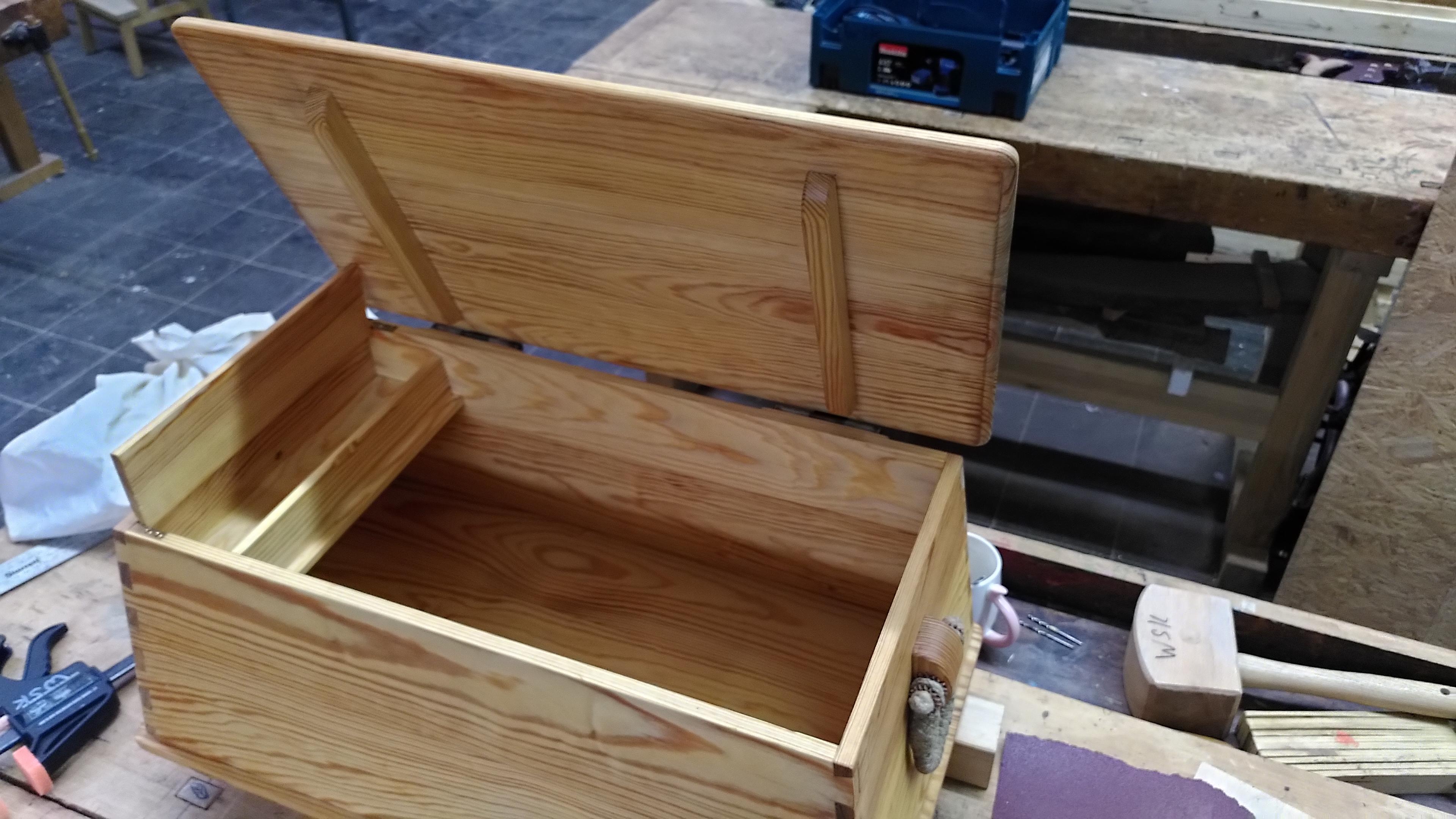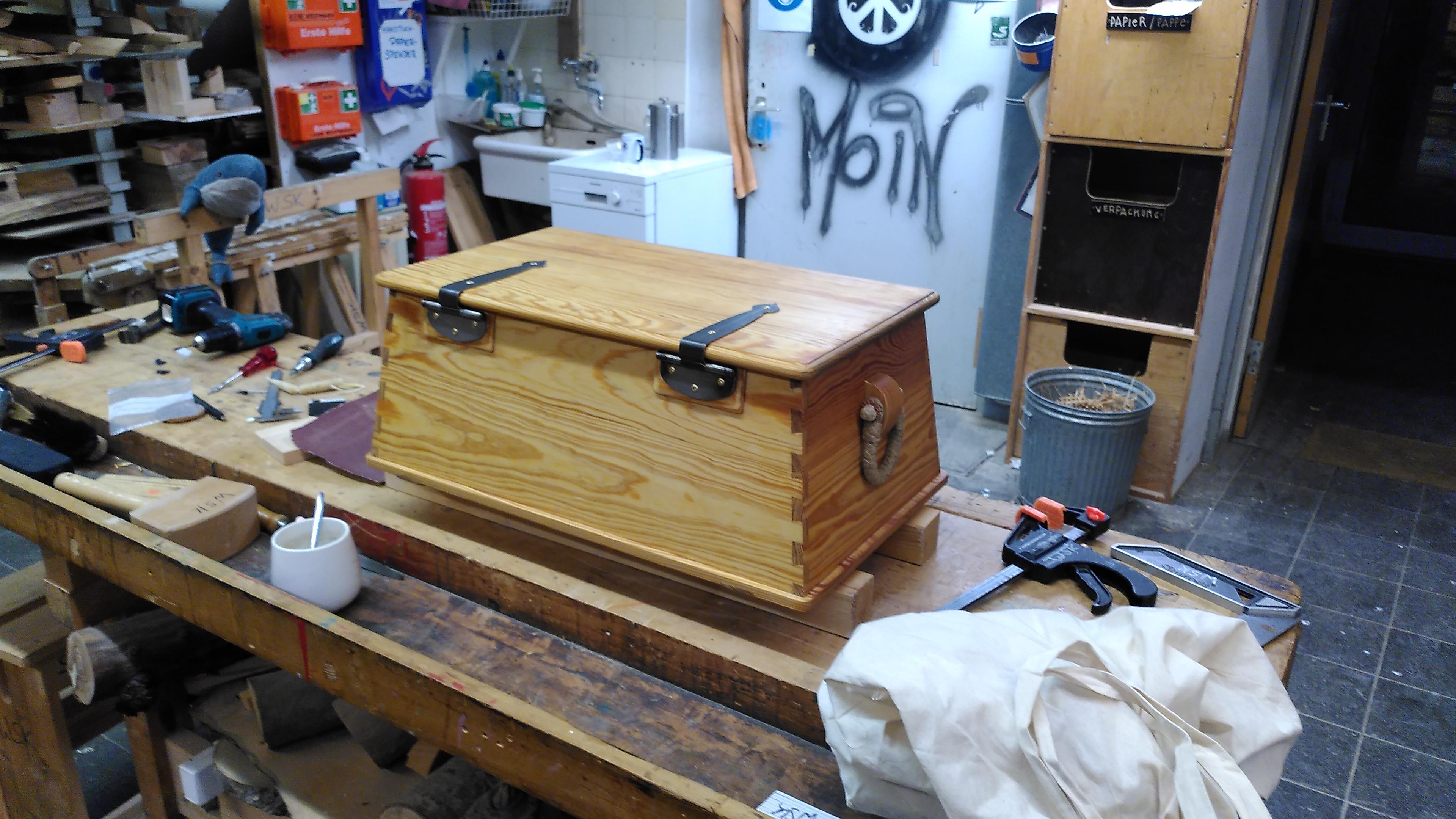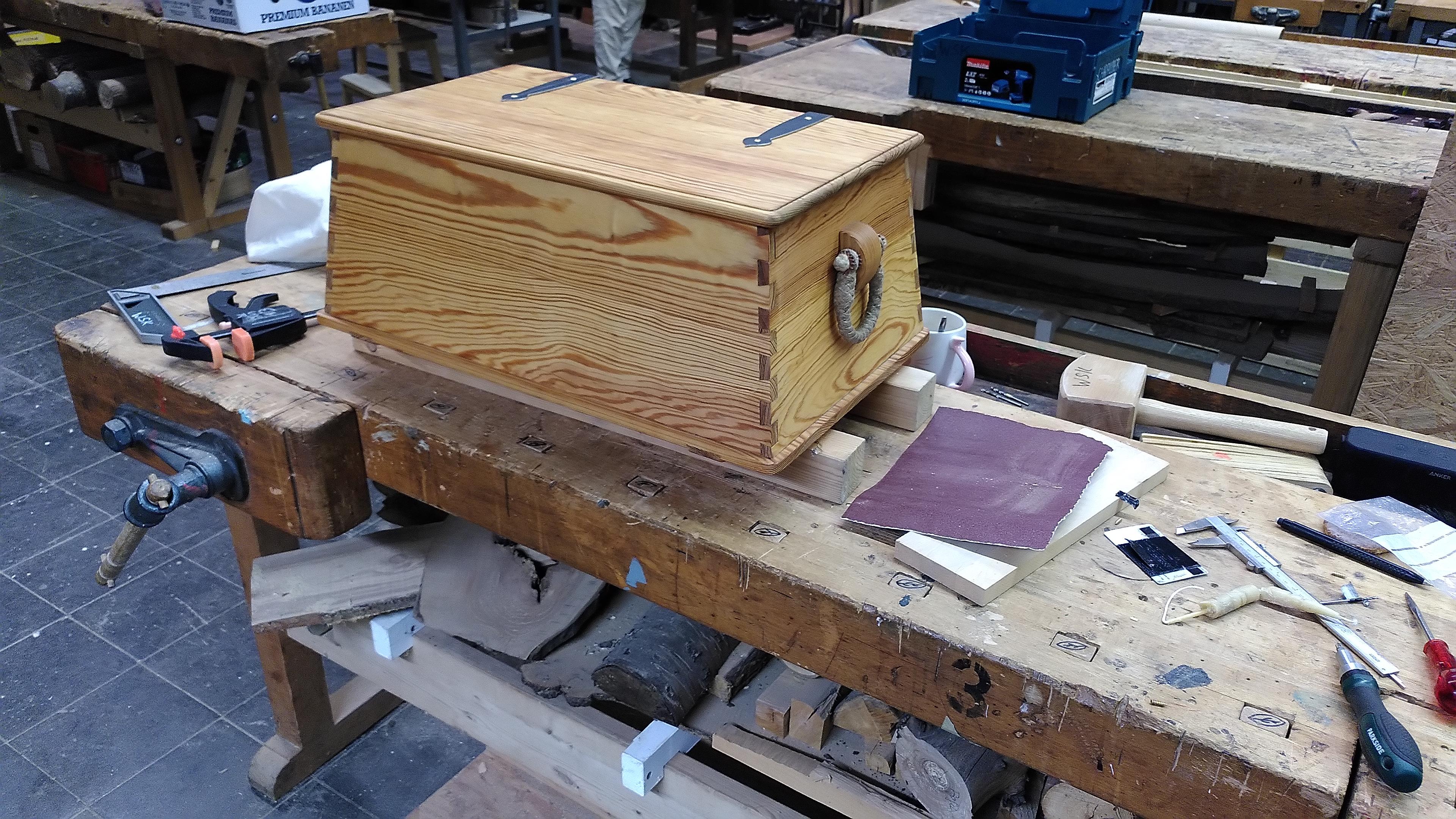
A look inside from above. The classic chest layout with a small compartment on the upper edge of the left side made with two inset boards, the bottom overhangs and forms a lip. There's a matching runner let into the right hand side, invisible in this picture, so a matching tray can be set down on it. The lid of the small compartment hinges along the side of the chest and is propped up, and serves to prop open the chest lid. There are two cleats let into the lid to keep it flat.

The chest from behind, the bands are custom made with one long leaf with a teardrop shape on the lid, and a short one with a curved lower edge with three screws into the back, on doubling pads. The long bands wrap around the overhanging chest lid with a double 90 degree bend. They're mounted with countersunk brass screws. Pozidriv. Not a single slotted screw on the whole thing. And no, they're not clocked. Just torqued down until they're flush, as is good practice.

The finished chest on the workbench. Made from 12mm pitch pine reclaimed floor boards, about 600mm wide, 350 high, 400 deep, sides and fronts are all sloped inwards in the manner of a sea chest and joined with dovetails. The bottom overhangs and is nailed on, it has two low runners crosswise that are let in with sliding dovetails. Handles are classic sea chest beckets, a U-shape bit of rope with eyes either end, covered in fancywork, on a rope axle with stopper knots, threaded through a chock, a shaped block of wood, that is screwed to the sides. The lid is a flat panel, not vaulted, it also overhangs on all sides and is held in place with steel bands. The corners are rounded over and there's a simple beading lip detail running all the way round. A 2mm step top and bottom and the rest planed half-round. Surface finish is linseed oil and beeswax, buffed out, and the finely grained flat sawn softwood has taken on a lovely honey blonde color.
1
